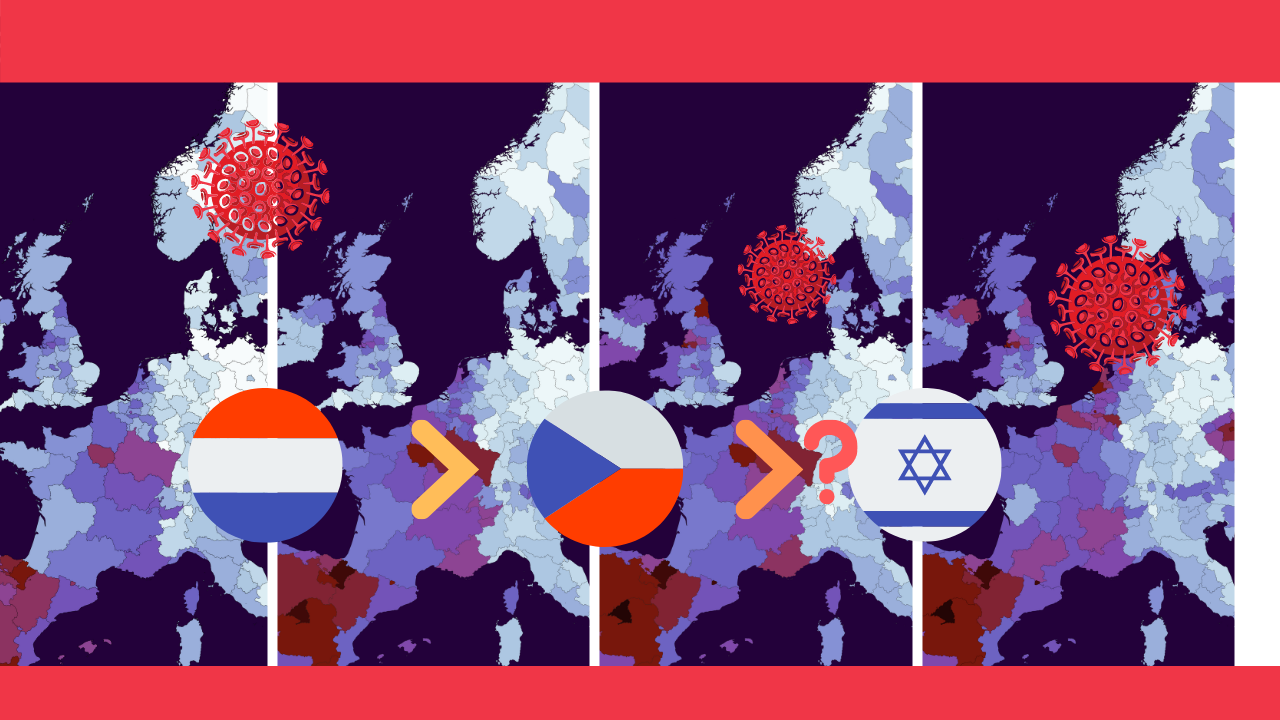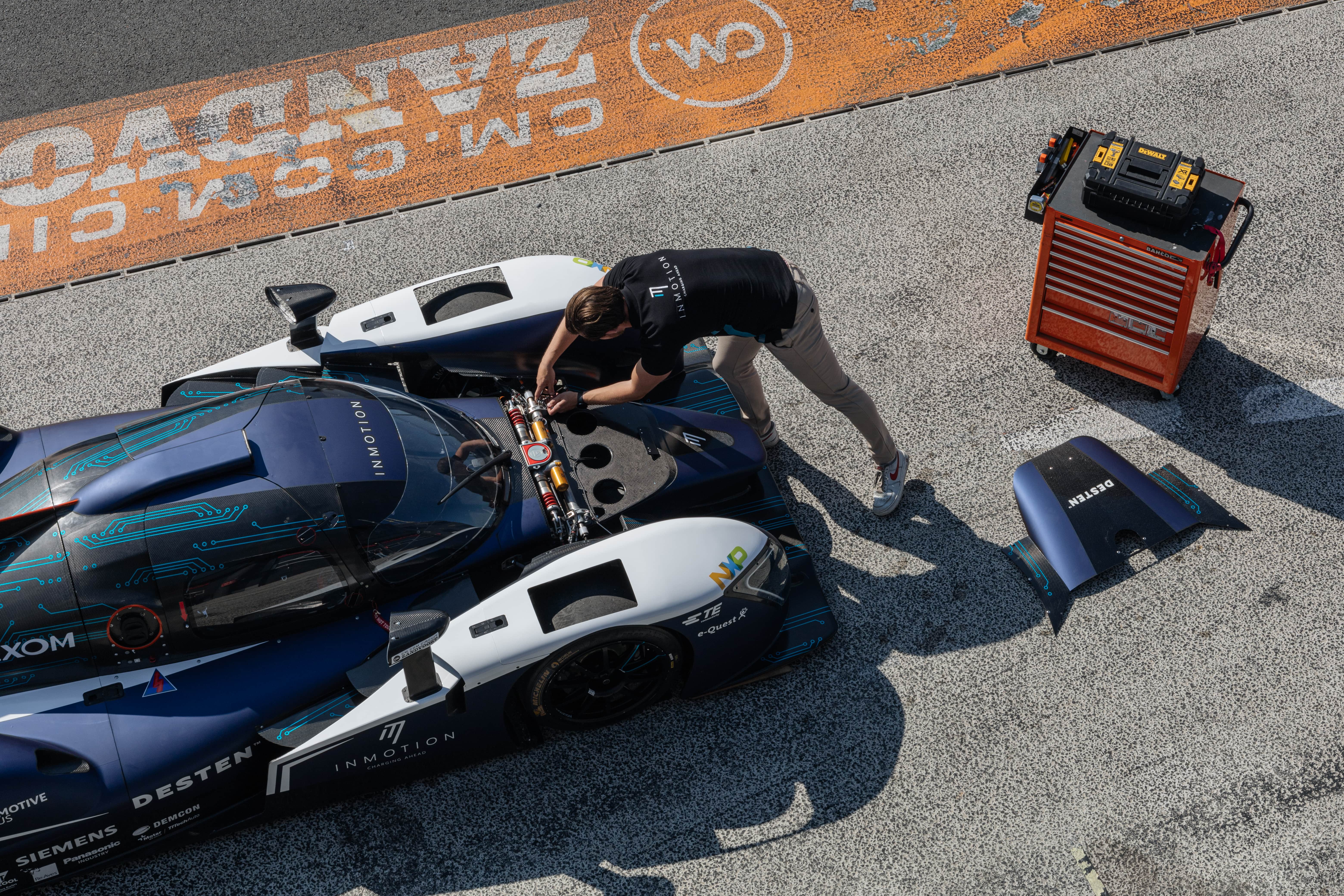
No matter if you call it a second wave or an autumn wave, it has started. And not too sparingly either. The weekly maps of Europe show only one corona trend: Rising infection rates in almost all countries.
Six countries are still struggling to cope with the swirling corona storm across the continent. These are Finland, Germany, Serbia, Italy, Norway, and Greece. For the rest of us, it’s all hands on deck.
On the maps with sliders below, the past week has been laid out next to the ones from 20 to 26 September. The second slider shows an even bigger difference in the comparison between the latest visualization and the situation of four weeks ago.
Spanish escalation risk
There are few countries for whom 2020 will be more disastrous than it is for Spain. The country already suffered a pandemic hit in the spring and absolutely does not seem to be spared this autumn. Meanwhile, 32,086 people have succumbed to the virus in this country. The economic misery there is plenty of percentage points worse than elsewhere in the Eurozone. Beleaguered Spain has been Europe’s absolute corona leader since July. Nevertheless, this may well change in October.
The Czech Republic was a success story during the first wave with practically the fewest fatalities and infections. But now the country even seems to be scrambling over Southern Europeans when it comes to the number of new infections per 100,000 inhabitants in seven days. Still, the Czechs are not yet technically the true corona leader. As Spain consistently reports lower numbers on the weekends.
The Czechs and the Spanish already experienced sharp peaks in July and August. That was much less the case in the Netherlands. It remained fairly quiet here until the end of August. The spread of the virus only accelerated at the beginning of September. A month later, our country can ‘congratulate’ itself with a dodgy corona bronze. In the meantime, the South Holland and North Holland provinces rank 11 and 19 respectively in the European expansion Top 20. And the corona train of the Low Countries has sped by Belgium and France by up to a third in the process.
In contrast to the Danes and the British, this is not due to the multitude of tests. The Czech Republic has the worst capacity in comparison to the proportion of positive tests. Its 12.1 % is more than four times higher than the detection standard of 3 % as stipulated by the European Centre for Disease Prevention and Control (ECDC.)

Viral autumn storm in September
This exponential woe becomes clearly visible on the map. Somehow the number of positive corona diagnoses is on the rise in the Netherlands as well as in the Czech Republic in a more or less the same way. Until the end of August, the countries were inconspicuous middle-of-the-rangers. Ever since the R features in the spelling of a month, they are morphing at a bloodcurdling pace into the fiercest corona hot spots in all of Europe.
How different was this picture in early July? At that time, both countries were still among the most corona-free areas on the continent with provinces that did not register any new corona diagnoses for an entire week. And even at the end of August, towards the end of the summer vacations, neither of the new number two or number three stood out very much compared to their neighboring countries.
How can a summer vacation after the easing of restrictions have such colossal consequences? Simple. In the Netherlands, the ministers responsible took off on vacation themselves. Similarly, in the Czech Republic, they toasted with their beer mugs, only to subsequently knock down with heavy artillery the viral defensive wall that initially spared them so much suffering. Freedom, parties, and vacation, we were all more than ready for that after such a grueling spring! So thought the government, thus releasing the brakes for the population as well.


The Israeli corona rollercoaster
How far can this curve still rise? We need to take a look outside of Europe. Nowhere in the world is the number of infections rising as fast as this place. And no, it is not a banana republic or a third world country. We are talking about Israel. Prime Minister Benjamin Netanyahu of the Likud party even declared in May that they had triumphed over the virus following a very successful spring in which COVID-19 had only caused a handful of infections and deaths.
However, the second round is completely different. The country with only 10 million inhabitants has been suffering since September from the fiercest pandemic wave so far seen. On some days, the absolute number of infections rose by more than 10,000 there. The country went into a full lockdown at the end of September for the second time in order to try to stem the tide. But for the time being, the number of infections continues to rise at a murderous rate. Capacity problems in the hospitals and a wave of deaths are on the horizon.
From viral victory to catastrophic corona fiasco
Just like the Czech Republic, Israel was considered one of the great corona success stories. The country quickly returned to the old normal out of an ‘intelligent lockdown’ as former health minister Adam Vojech called it. Prime Minister Netanyahu kicked off his election campaign as a successful crisis coordinator. On March 2, 2021, the Israelis go back to the polls to elect a new Knesset. A fantastically resolved crisis works brilliantly for the campaign. A similar election takes place fifteen days later in the Netherlands. While the Czechs went to the ballot box for regional elections last weekend.
That coronaviruses do not take into account the campaign stance of politicians seems to hold sway in all three countries. In Israel, it led to incumbent Prime Minister Benjamin Netanyahu not wanting to implement policies that would make him less popular. Corona turned into a political game over there. An ultra-orthodox coalition party forced through an exemption for the maximum number of people present in synagogues. These filled to the brim again during the summer months. This was permitted against the advice of the ‘corona chef de mission’ Ronni Gamzu, a renowned virologist. As a direct consequence, he was no longer regarded by society as an authority.
Yihye beseder!
Preparations in readiness for the autumn barely got off the ground. For example, getting the test capacity up and running turned into chaos, which in turn caused waiting times of up to four days. Hardly any contact tracing was carried out due to a lack of personnel. On top of that, quarantine following a corona infection was not made mandatory either. Whereas security at Tel Aviv airport is among the absolute best in the world where terrorism is concerned, this was by no means the case for the coronavirus. Anyone could enter the country without a health check. There was never a test lane in place.
Since then, infections have risen to the highest level worldwide during the vacation months. Because of the pragmatic ‘yihye beseder‘ mentality in the country – freely translated as: ‘it’s going to be okay’ – for many Israelis, corona remains a matter of first seeing, then believing. This mentality, on the other hand, no longer stood the Prime Minister in good stead, so people took to the streets en masse to demand his resignation.
Pandemic political chaos
It was only at the end of August that an ‘escalation ladder system‘ came into force detailing corona policy at a regional level aimed at taming the pandemic with smart made-to-measure localized solutions. However, this policy just caused more confusion and even worked like fuel to the flames. Palestinian-Israeli and Orthodox Jews revolted when it turned out that their neighborhoods were more often classified into the 40 ‘red’ zones than on average. This led to protests in which the government was accused of discrimination.
The non-religious population was also completely fed up with the messy sweep of policies, the economic misery, and the political games. An opinion poll showed that only a quarter of the population still had faith in the government of Nethanyahu. They claimed that former prime minister Ehud Barak orchestrated these protests together with the ‘pedophile wealth from Jeffrey Epstein.’
Massive anti-government protests
The traffic light system was thrown overboard in the second week of September. On September 13th, far-reaching restrictions for the entire country were announced that were to last three weeks. Jewish New Year would be celebrated for the first time during a lockdown. As the infections continued to escalate and public anger had by no means cooled off, the country introduced a new total lockdown on September 24th. All public buildings had to close down for the second time within a year. Despite a ban on demonstrations with more than twenty attendees, the massive anti-government protests still continue from all manner of ideological quarters. “This lockdown can last up to six months to a year,” the maligned Netanyahu stated during a cabinet meeting.
Despite the fact that the measures have been in place for almost a month, the corona wave is far from over. While the population and the government are arguing amongst themselves, the number of hospitalizations is also rising at an alarming pace. As a result of the sustained stream of critically ill corona patients, 253 people died last week. A tragic weekly record. The healthcare infrastructure is on the verge of collapse as well.
From smart to ‘stupid’ lockdown
The second wave in the Netherlands or the Czech Republic will not be as catastrophic as it is in Israel. But still, after the first wave, there was no inkling that there was a problem looming. It just goes to show how even a rich and modern country can choke on a ‘harmless’ virus.
In order to reverse this trend, the Czech Republic said goodbye to the Minister of Health who thought up the flexible ‘intelligent lockdown’. Successor Roman Prymula is more a member of the draconian containment school. He declared a state of emergency on September 30th which will last for a month. It remains to be seen whether this will convince the suspicious, obstinate mindset of the Czechs. Their hospital capacity is now being put to the test for the first time during the corona crisis.
In the Netherlands, earlier closing times for the hospitality sector, an urgent health advisory for face masks for some places, and an appeal to common sense should result in the corona wave subsiding without a state of emergency or new lockdown. Yet the minds of the individualistic, down-to-earth, and gregarious Dutch are not too quick to panic. And they tend not to turn their backs on a good discussion either. The fact that this has so far failed to be the case for certain dignitaries in important positions could be worth noting.







